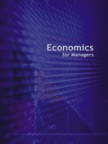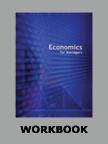Case Details: |
Price: |
| Case Code |
: |
ECOA105 |
For delivery in electronic format: Rs.
300;
For delivery through courier (within India): Rs.
300 + Rs. 25 for Shipping & Handling Charges
Themes- |
| Case Length |
: |
12 Pages |
| Period |
: |
2003 |
| Organization |
: |
- |
| Pub Date |
: |
2003 |
| Teaching Note |
: |
Not Available |
| Countries
|
: |
Thailand, Asia |
| Industry |
: |
- |
Abstract:
|
Thailand, one of South East Asia's most important countries, had seen 17
military coups since the removal of absolute monarchy in 1932. Civilian
governments had often been short-lived and unstable. During the Asian currency
crisis, the baht lost half its value. Half the country's loans turned
non-performing and output plummeted. Following the Asian currency crisis, the
Thaksin administration attempted to use fiscal policy to facilitate a sustained
economic recovery. Policies to diversify export markets and promote agricultural
exports were also announced. Incentives were offered to substitute imports with
locally produced goods.
|
|
But most economists believed Thailand had to
do a lot more to get rid of the excesses that had led to the
1997 currency crisis. The case illustrates the need for
developing countries to have sound financial systems to absorb
huge capital inflows.
Contents:
Keywords:
Thailand case study, Baht, Asian currency crisis, Thaksin Shinawatra, Thai Rak Thai party, Siam, Thai Asset Management Corporation, Thiraphong of Thai Union Frozen, National Counter-Corruption Commission, Thailand economic policy, ASEAN (Association of Southeast Asian Nations) Free Trade Area, Thailand social policy, Thailand industry, Thailand foreign trade, South East Asian trade block
Thailand - The Currency Crisis and Beyond
- Next Page>>

|
|



